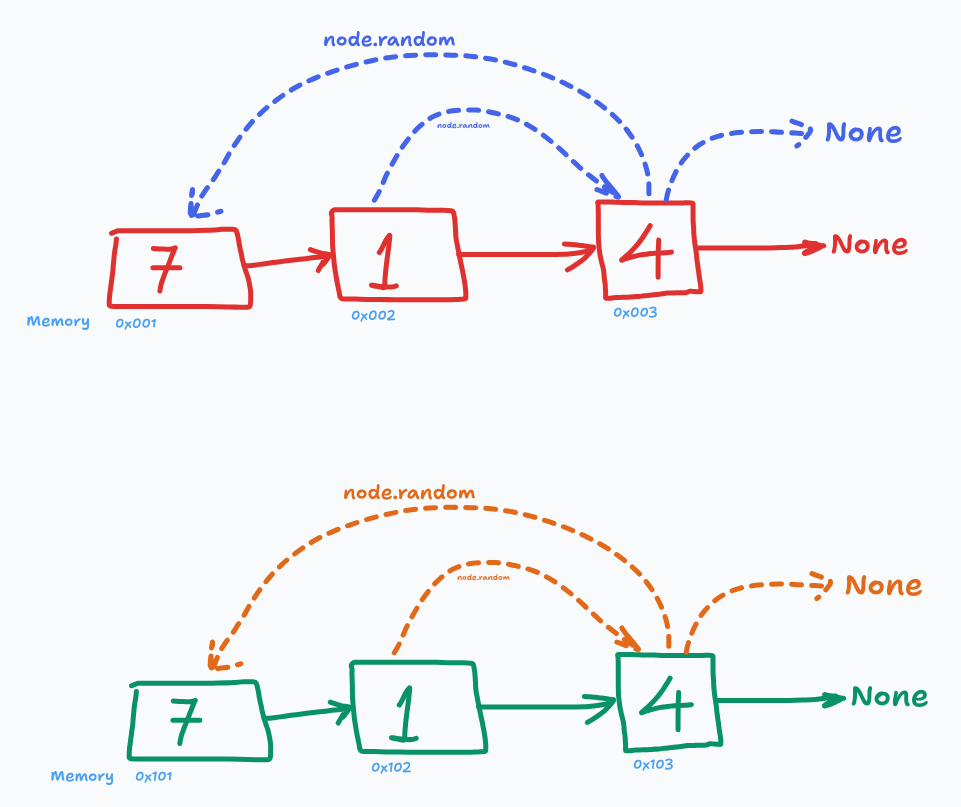Lets view this operation into two separate operations.
A) We need to deep copy a list - implying that each memory address of a node in this new list should be new, and have no node pointing to any node from the older list.
B) In the new list, we need the same order of the random pointers as the old list.
In order to obtain new memory addresses simply just create new Node(_val).
And keep track of the mapping between the old and the new pointers - this will be helpful later while assigning the random pointers.
Tip
Make sure to have a mapping in both directions for reasons you’ll understanding while dry running the code.

Code
Python3
"""
# Definition for a Node.
class Node:
def __init__(self, x: int, next: 'Node' = None, random: 'Node' = None):
self.val = int(x)
self.next = next
self.random = random
"""
class Solution:
def copyRandomList(self, head: 'Optional[Node]') -> 'Optional[Node]':
d = Node(10**5)
dummy = d
mapping = defaultdict() # {}
mappingRev = defaultdict()
h = head
while h: # 2
newNode = Node(h.val) # 2
dummy.next = newNode # [0, 1, 2]
dummy = dummy.next # traverse forward
mapping[newNode] = h # {new: old}
mappingRev[h] = newNode
h = h.next
# assigning the random pointers
h = d.next
while h:
if mapping[h].random:
h.random = mappingRev[mapping[h].random]
else:
h.random = None
h = h.next
return d.nextBig O Analysis
-
Runtime
The runtime complexity here is since we are visiting each node at most only once, during a single traversal.
-
Memory
The memory usage is since we use the
collections.defaultdictobject to store the mapping from new to old nodes.
— A